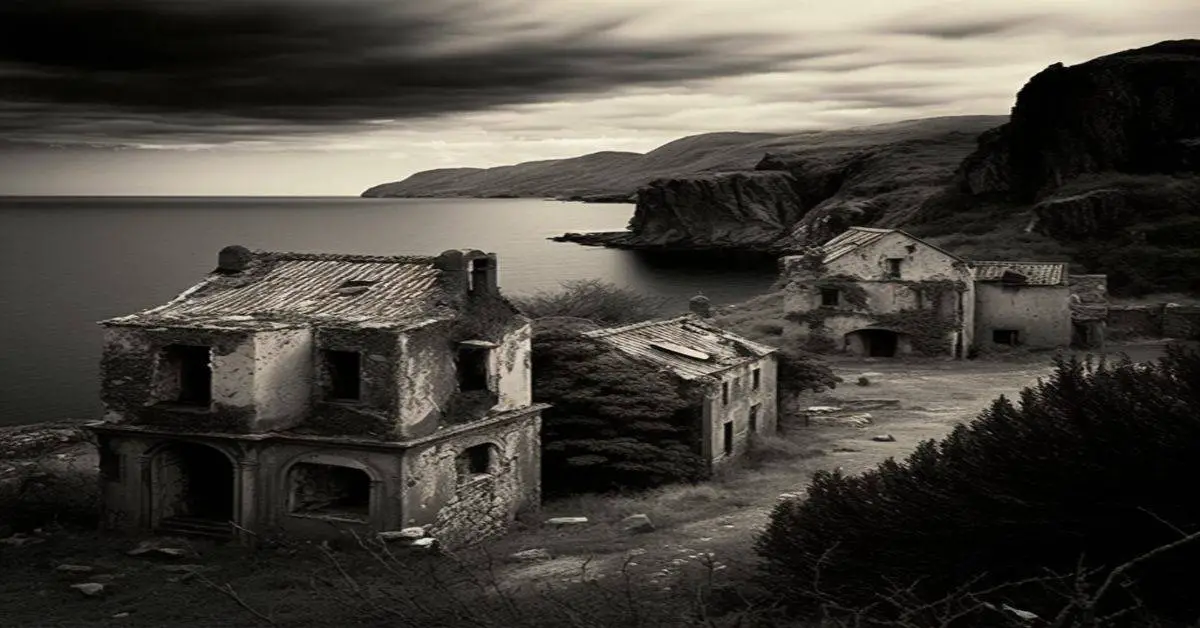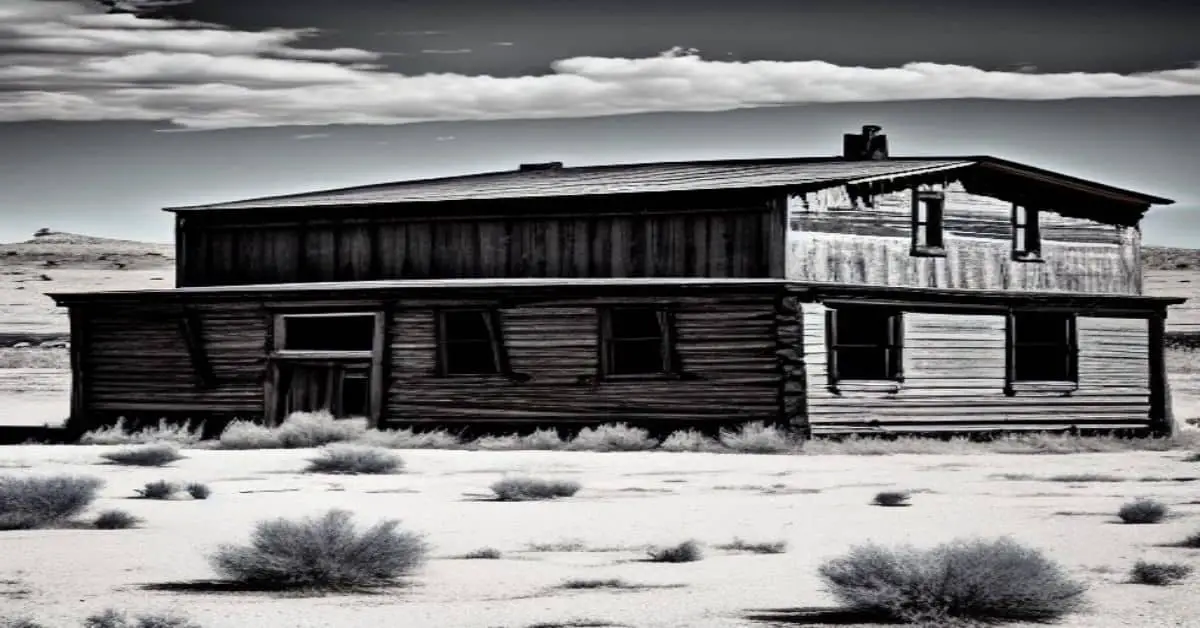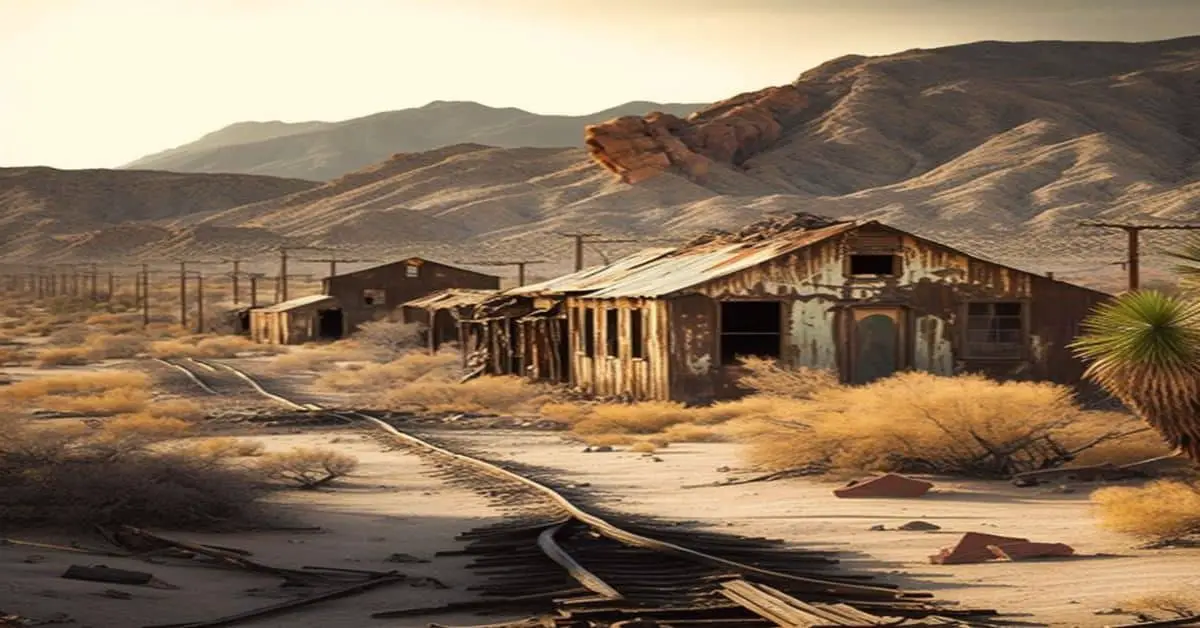Fort Mohave, situated near the Colorado River and Kingman, Arizona, has a long and colorful history spanning over a century. Initially established in 1858 as Camp Colorado, the town was abandoned and reoccupied numerous times before being home to military personnel for two years.
Eventually, more prospectors settled in the area and reoccupied the town, which persisted until 1890. Despite a school operating on the site through the early 1900s, all structures were plundered in 1941, leaving only foundations behind.
Today, Fort Mohave is an Arizona ghost town with a fascinating history that dates back to its origins as a military camp. The history of Fort Mohave is replete with stories of hardship, conflict, and resilience.
The town’s fluctuating fortunes are a testament to the challenges that settlers faced in the harsh desert environment. The rise and fall of Fort Mohave reflect the changing political and economic realities of the American Southwest during the 19th and early 20th centuries.
Despite being abandoned for over a century, Fort Mohave continues to capture the imagination of historians, archaeologists, and tourists intrigued by its rich and varied past. This article will explore the history of Fort Mohave, highlighting its occupation and abandonment and examining its current state as a ghost town.
Key Takeaways
- Fort Mohave, Arizona was established in 1858 as Camp Colorado to protect travelers from Native American attacks and later became a thriving community until it was raided in 1941, leaving only foundations behind.
- The arrival of military personnel and prospectors disrupted traditional ways of life. They led to conflicts over resources, which ultimately resulted in the town’s eventual abandonment in the 1890s due to both the military’s shifting priorities and the effects of conflicts with indigenous communities.
- Despite being abandoned for over a century, Fort Mohave continues to capture the imagination of historians, archaeologists, and tourists intrigued by its rich and varied past, and the ruins currently serve as a testament to the impacts of colonization and resource conflicts on indigenous communities.
- Efforts are being made to preserve the site and the town’s history, including plans to develop a museum and interpretive center to educate visitors about the town’s history.
History of Fort Mohave
The history of Fort Mohave, Arizona is characterized by its establishment as a military camp in 1858. Initially named Camp Colorado, the camp was established to protect travelers along the Beale Wagon Road from Native American attacks.
The military presence attracted prospectors to the area, leading to the camp’s abandonment and subsequent reoccupation by prospectors in 1866. As more prospectors came to the area, Fort Mohave grew into a thriving town.
The occupation lasted through 1890, with a school operating at the site through the early 1900s. However, the town’s fortunes took a turn for the worse in 1941 when all structures were raided, leaving only foundations remaining of this Arizona ghost town.
Despite its short-lived prosperity, Fort Mohave remains an important part of Arizona’s history, offering a glimpse into the state’s early years of military and prospecting activity.
Occupation and Abandonment
Occupation of the site began in 1858 and lasted through 1890, followed by abandonment until its reoccupation by prospectors in 1866. The reasons for its abandonment were largely due to the military’s decision to focus on other areas, as well as conflicts with the local indigenous communities.
In 1861, the military abandoned the site due to the outbreak of the Civil War, and it wasn’t until 1866 that prospectors began returning to the area. However, conflicts with the Mohave and Chemehuevi tribes led to a decline in the town’s population, and by the early 1890s, the town had been largely abandoned.
The impact of Fort Mohave’s occupation and abandonment on the local indigenous communities was significant. The arrival of military personnel and prospectors disrupted traditional ways of life and led to conflicts over resources. The military’s decision to abandon the site in 1861 created a power vacuum, allowing for prospector encroachment and further conflict with local tribes.
The town’s eventual abandonment in the 1890s was a result of both the military’s shifting priorities and the effects of conflicts with indigenous communities. Today, the remains of Fort Mohave serve as a reminder of the complex history of colonization and conflict in the American West.
Current State of the Town
Currently, the site of the former settlement near Kingman, Arizona, serves as a testament to the impacts of colonization and resource conflicts on indigenous communities, as seen in the case of Fort Mohave. The town’s ruins are scattered across the desert landscape, with only foundations and a few building remnants remaining. Visitors can explore the area and see the remnants of the military fort, the school, and the homes of the settlers who once called the town home.
While the town is no longer inhabited, the site provides a glimpse into the past and the area’s complex history.
Despite the lack of preservation efforts, there is hope for the future of Fort Mohave. Efforts are being made to preserve the site and the town’s history. The Fort Mohave Tribe has been working to gain recognition and protection for the site, and there are plans to develop a museum and interpretive center to educate visitors about the town’s history.
As more people become aware of the site’s historical significance, more efforts will likely be made to preserve and protect the ruins of Fort Mohave for future generations to explore and learn from.
Frequently Asked Questions
What was life like for the military personnel stationed at Fort Mohave?
Military personnel stationed at Fort Mohave likely followed a regimented military routine, such as patrolling, constructing and maintaining fortifications, and training. Social interactions may have been limited to fellow soldiers and officers, with little outside contact.
What were the main industries in the area during the town’s occupation?
Mining and agriculture were the main industries in Fort Mohave during its occupation. These industries contributed significantly to the local economy and culture. Remnants of these industries can still be seen in the area today, including abandoned mines and old farming equipment.
Did any notable events or figures come out of Fort Mohave’s history?
Notable figures or historical events are not commonly associated with Fort Mohave, Arizona. The town’s occupation was primarily driven by military and mining interests, with a school operating on site. However, its abandonment in 1890 and subsequent raiding in 1941 mark significant historical events.
What is the surrounding landscape like, and how did it affect life in the town?
The surrounding desert landscape and influence of the Colorado River presented challenges for farming and transportation in the Fort Mohave area. The harsh climate and lack of water made it difficult for settlers to thrive in the region.
Are there any plans for the preservation or redevelopment of the site?
Preservation efforts for Fort Mohave are limited. Economic opportunities are scarce due to the town’s remote location and lack of remaining structures. The only redevelopment plans involve creating a hiking trail through the site.


